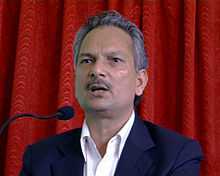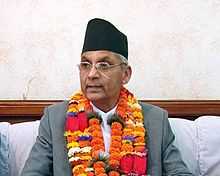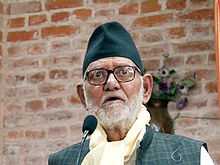Bahun
| |||||||||||||||||||||
| Regions with significant populations | |||||||||||||||||||||
|---|---|---|---|---|---|---|---|---|---|---|---|---|---|---|---|---|---|---|---|---|---|
| Nepal, India, Bhutan | |||||||||||||||||||||
| Languages | |||||||||||||||||||||
| Nepali language | |||||||||||||||||||||
| Religion | |||||||||||||||||||||
|
| |||||||||||||||||||||
Bahun (बाहुन) is a local term for the traditional Vedic Brahmin of Nepal. In Nepal, Brahmins are traditionally priest, educators and scholars . By tradition and civil law (until 1962), they represent the highest of the four Hindu varna, or castes.
History
Brahmins have historically been a caste, one of the four varnas, according to the Varna fourfold Brahminical society (वर्णाश्रम पद्धति). The Brahmin castes may be broadly divided into two regional groups: Pancha-Gauda Brahmins and Pancha-Dravida Brahmins, as per the shloka. Most of the communities find their roots from Banaras of India mentioned in much older Vedas and puranas.
The hill based indigenous ethnic groups Gurung, Magar, Tamang, Newar, Rai, Limbu, Sherpa, Mananggay, Mustang-gi, Thakali, Dolpo, Walungi and similar ethnic groups comprise over 50% of the population of the Middle Hills and the Khas represent 31% of the population. By tradition (and civil law) it was the highest of four Hindu varna (or castes), making up 12.5% of the population of Nepal.
Early migration
The Khas Brahman community make up a major portion of the demographics of Nepal. They have moved eastward through Xinjiang province of China, into western Tibet, and the Himalayan foothills from Kashmir and Kumao/Garwal of India. They settled first in the Karnali River basin and then the Gandaki. Lastly they settled into the Kosi basin as well as Sikkim and Bhutan.
Brahmins of Indian Origin
During Mughal as well as various Muslim invasions in India, various Hindus, mostly of Rajasthani and Punjabi origin started migrating to the Himalayas. Most of the Brahmins who had migrated to Nepal got assimilated into the already existing early migrated Brahmin society from Indian to the Nepalese hills. Many aspects of Nepali bahun is different from Indians.
Brahmo-Kshatriyas of Bhutan
As early as the rule of Shabdrung Namgyal in early Bhutan, a group of Gurungs from North-East Nepal had emigrated to Bhutan. They are also called as Nepal Orgien Gurung but mostly these Gurungs were in medicine along with Warfare. Some were known to be scholars in various Buddhist scriptures. Shabdrung Namgyal was so impressed with this Aryanised group of Kirats that they gave them the title of Huig-Namtre or Warrior doctors. Though often mistaken as Lhotshampas by foreigners, the Druk-Pa and Sharchop ethnic groups of Bhutan assimilated them into their own society. Many of these Brahmo-Kshatriyas migrated out side Bhutan to North-East India as well as Gorkhaland and West Bengal, and many of them have common surnames with Bengalis, Assamese, Nepalis, and Various other eastern Indo-Aryan and Tibetan groups.
Types of Bahun by sanctity lineage
In Nepal Bahun are further divided into two sub-categories according to the vedic purity of their lineage;
Upādhyāya bahun
Upādhyāya bahun are regarded as purer in lineage and are permitted to do the karmakand (Vedic Worshiping ways for different events during a human life, as per the Hindu tradition). These people write Upādhyāya and Sharma interchangeably with their surname.
Jaisi bahun
Jaisi bahuns are descendants of Upādhyāya bahun and a widow woman or woman from other Kshatriya cast. It was believed to degraded the lineage into Jaisi. Jaisi bahuns are not permitted to do the vedic karmakand.
Notable Khas Bahuns
- Politics
- Ranga Nath Poudyal - (first Brahmin prime minister of the Kingdom of Nepal)
- Matrika Prasad Koirala - (president of the Nepali Congress; and first prime minister after the Rana dynasty rule ended in 1951)
- Tanka Prasad Acharya - (former prime minister, he was known as the "living martyr" of Nepal; was the founding leader of Nepal Praja Parishad)
- Bishweshwar Prasad Koirala - (first democratically elected prime minister of Nepal)
- Nagendra Prasad Rijal - (former prime minister of Nepal)
- Krishna Prasad Bhattarai - (former prime minister of Nepal)
- Girija Prasad Koirala - (former prime minister of Nepal)
- Man Mohan Adhikari - (first democratically-elected Communist Party member to be prime minister in Nepal)
- Pushpa Kamal Dahal "Prachanda" - (former Prime Minister of Nepal)
- Madhav Kumar Nepal - (former prime minister of Nepal)
- Jhala Nath Khanal - (former prime minister of Nepal)
- Baburam Bhattarai - (former prime minister of Nepal)
- Khil Raj Regmi - (Chief Justice of Nepal & former prime minister of Nepal)
- Sushil Koirala- current Prime Minister of Nepal
- Defence
- Arts
- Bhanubhakta Acharya - ("Nepal ka Adikavi" or "Nepal's Original Poet")
- Motiram Bhatta - ("Yuwa Kavi" or "Youth Poet" of Nepal)
- Lekhnath Paudyal - ("Kavi Shiromani" or "founding father of modern Nepali poetry")
- Laxmi Prasad Devkota - ("Maha Kavi" or "The Great Poet of Nepal")
- Madhav Prasad Ghimire - ("Rashtra Kavi", "National Poet" of Nepal)
- Hari Bansha Acharya - (comedian, actor and writer of Nepal)
- Manisha Koirala - (Nepali film actress)
- Krishnahari Baral- (Nepali lyricist, songwriter, poet, literary critic, and author )
See also
- Forward Castes
- Classification of Brahmins
Notes
External links
- The Complete Reference to Brahmins; Material has been borrowed for this article with the permission of Dr. Vepachedu.
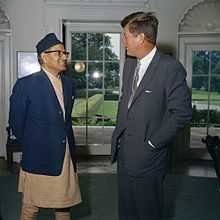

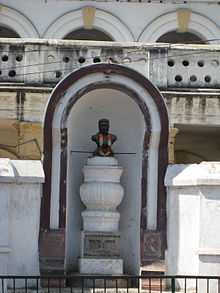

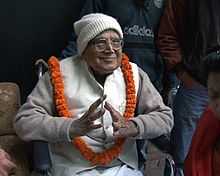
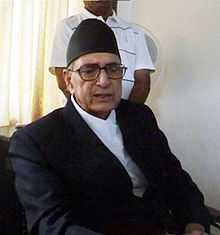

.jpg)
